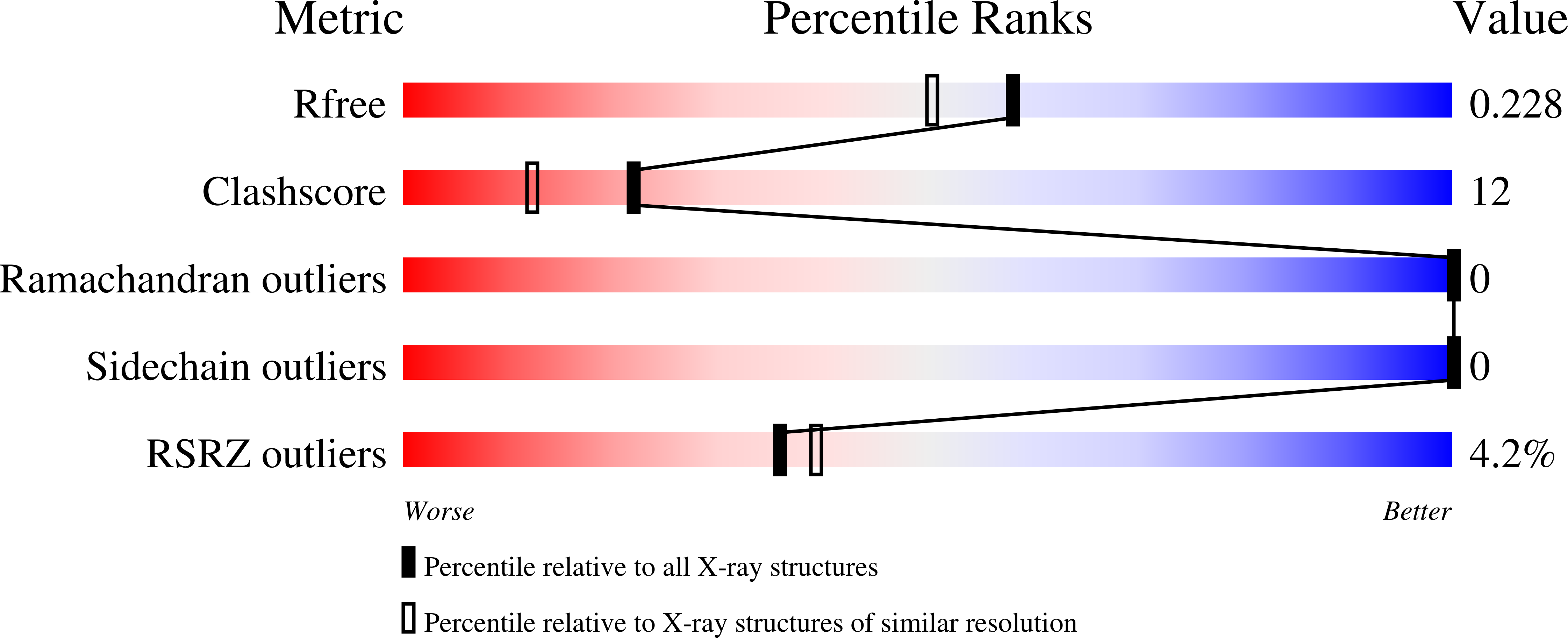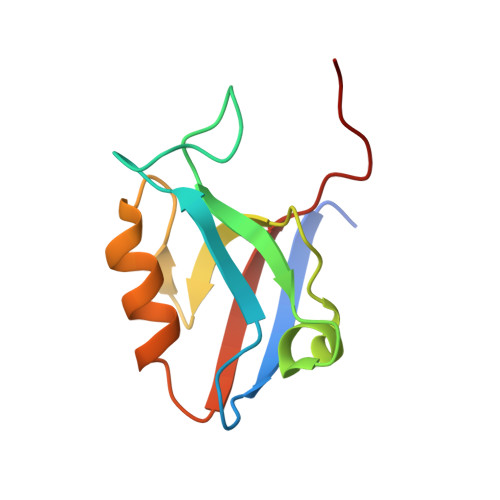Structural basis for the differential interaction of Scribble PDZ domains with the guanine nucleotide exchange factor beta-PIX.
Lim, K.Y.B., Godde, N.J., Humbert, P.O., Kvansakul, M.(2017) J Biol Chem 292: 20425-20436
- PubMed: 29061852
- DOI: https://doi.org/10.1074/jbc.M117.799452
- Primary Citation of Related Structures:
5VWC, 5VWI, 5VWK - PubMed Abstract:
Scribble is a highly conserved protein regulator of cell polarity that has been demonstrated to function as a tumor suppressor or, conversely, as an oncogene in a context-dependent manner, and it also controls many physiological processes ranging from immunity to memory. Scribble consists of a leucine-rich repeat domain and four PDZ domains, with the latter being responsible for most of Scribble's complex formation with other proteins. Given the similarities of the Scribble PDZ domain sequences in their binding grooves, it is common for these domains to show overlapping preferences for the same ligand. Yet, Scribble PDZ domains can still exhibit unique binding profiles toward other ligands. This raises the fundamental question as to how these PDZ domains discriminate ligands and exert specificities in Scribble complex formation. To better understand how Scribble PDZ domains direct cell polarity signaling, we investigated here their interactions with the well-characterized Scribble binding partner β-PIX, a guanine nucleotide exchange factor. We report the interaction profiles of all isolated Scribble PDZ domains with a β-PIX peptide. We show that Scribble PDZ1 and PDZ3 are the major interactors with β-PIX and reveal a distinct binding hierarchy in the interactions between the individual Scribble PDZ domains and β-PIX. Furthermore, using crystal structures of PDZ1 and PDZ3 bound to β-PIX, we define the structural basis for Scribble's ability to specifically engage β-PIX via its PDZ domains and provide a mechanistic platform for understanding Scribble-β-PIX-coordinated cellular functions such as directional cell migration.
Organizational Affiliation:
From the Department of Biochemistry and Genetics, La Trobe Institute for Molecular Science, La Trobe University, Melbourne, Victoria 3086.















